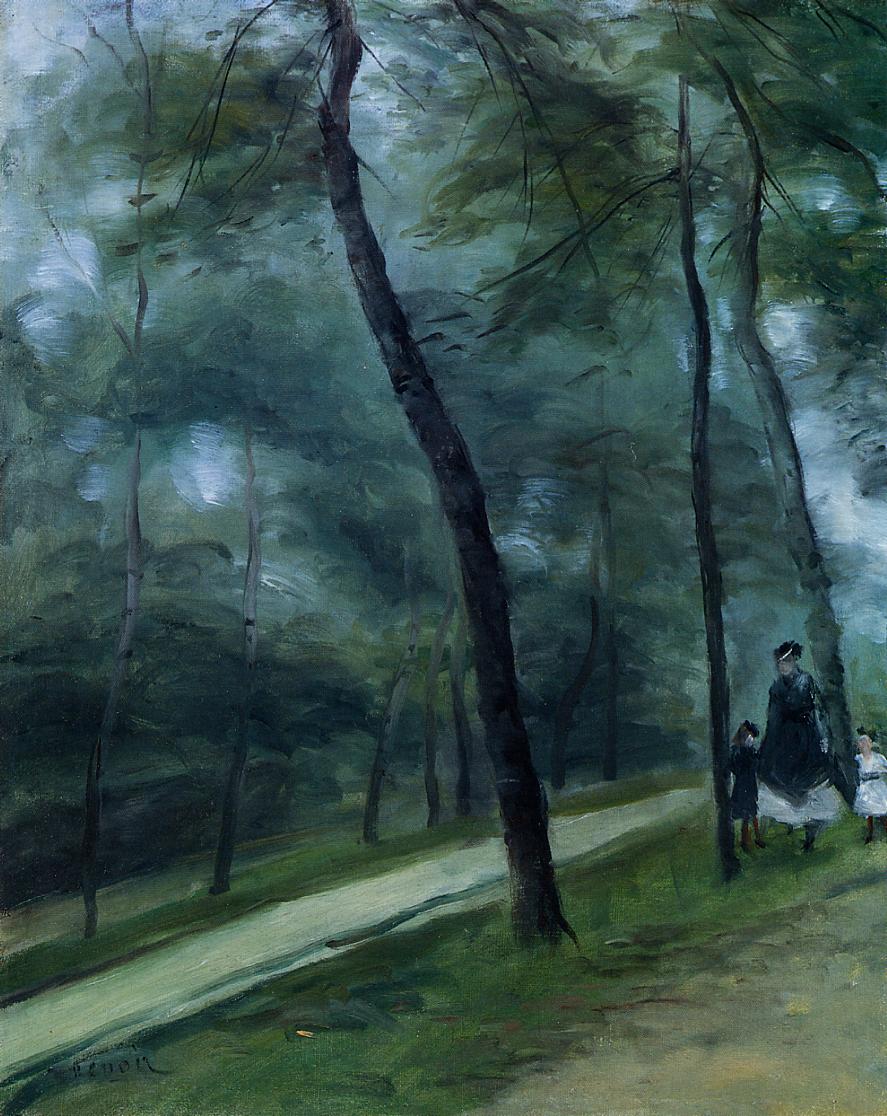Pierre-Auguste Renoir, A Walk in the Woods, 1870
Pierre-Auguste Renoir (1841-1919) was a French painter and one of the leaders of the Impressionist movement. Born to a working class family in the city of Limoges, Renoir worked in a porcelain factory as a boy. There his drawing skill was noticed and he was chosen to paint fine china patterns. In 1862 he began studying art in Paris, and soon met Claude Monet, Alfred Sisley, and Frédéric Bazille. Renoir first exhibited at the Salon in 1864, but the political turbulence made it difficult to get noticed. He had his first major success at the Salon of 1868 with Lise with a Parasol (1867). After to failing to gain much ground with critics in the traditional academic establishment, Renoir joined Monet, Sisley, Camille Pissarro, and Berthe Morisot, among others, in the first Impressionist exhibition in April of 1874. The show established the group and signaled Impressionism (named after a painting of Monet's by a disparaging critic) as the next great style of art. Renoir eventually became one of the most successful artists in France. Renoir worked in portraiture (that happens to be a painting of Monet) and landscape, producing works of great sensitivity. He painted scenes of everyday life, and he is also well known for his paintings of children. Renoir also painted many scenes of Parisian society, and produced one of the most important paintings of the leisurely lifestyle of the time in Dance at Le Moulin de la Galette (1876). In his later life Renoir continued exploring the themes that interested him throughout his career, particularly the relationship of flesh and color. A Walk in the Woods, also known as Madame Lecoeur and Her Children, is a very unusual painting for Renoir. It is does not contain the bright light and airiness that marks most of his oeuvre. Instead it is dark and a bit ominous. The trees are thick and block out the sky, allowing little sunlight through, and what sky we can see looks grey rather than blue. The trees are crooked and bent, hanging over the path and intertwining with each other. Madame Lecoeur and her children are not walking on the path, and in fact seem to be walking between two distinct paths, and the appear so far to the edge of the canvas that the painting feels unbalanced and unsettling. Renoir creates this feeling using his signature large brushstrokes and rich colors, resulting in a painting that is highly engaging, yet somewhat impenetrable.

No comments:
Post a Comment